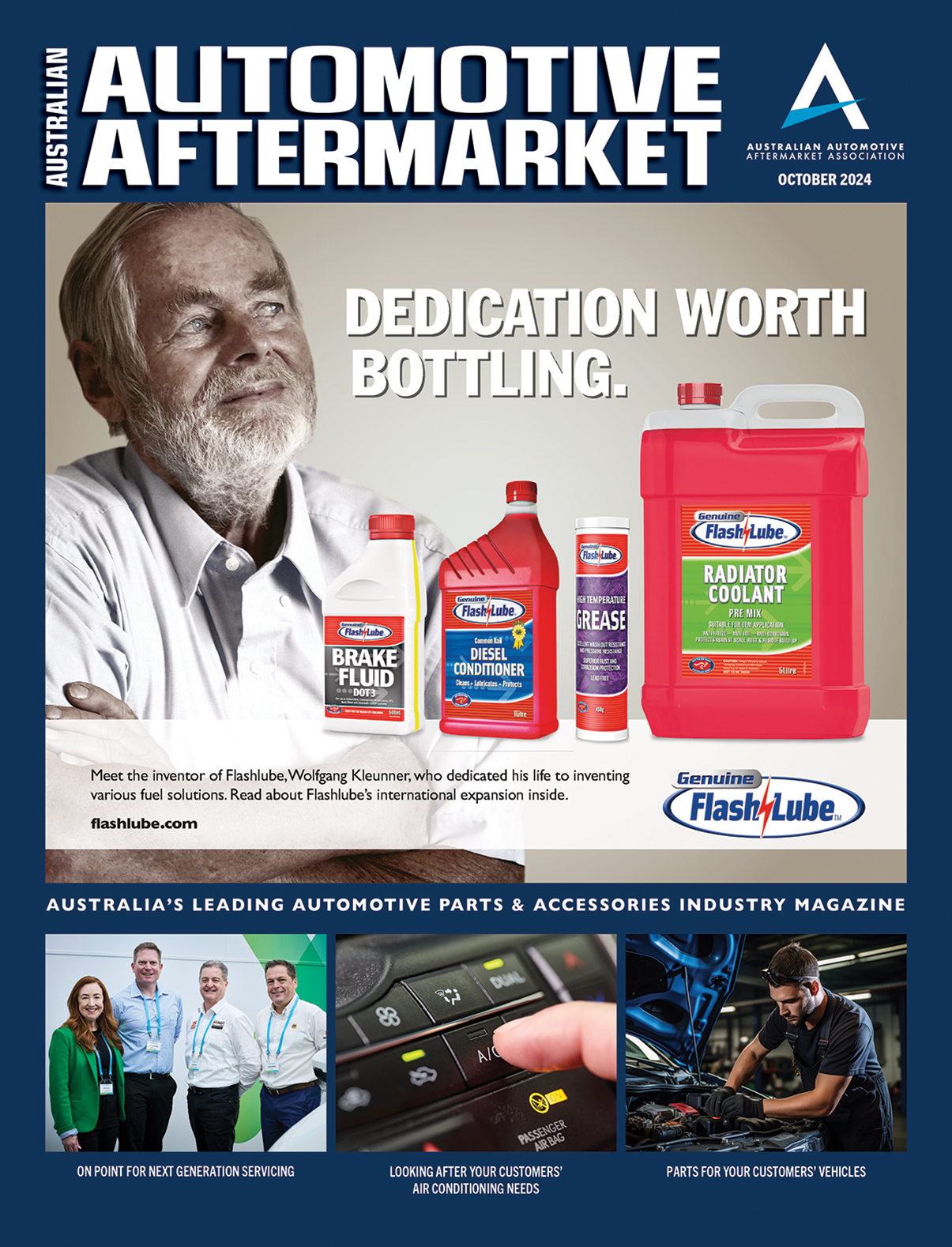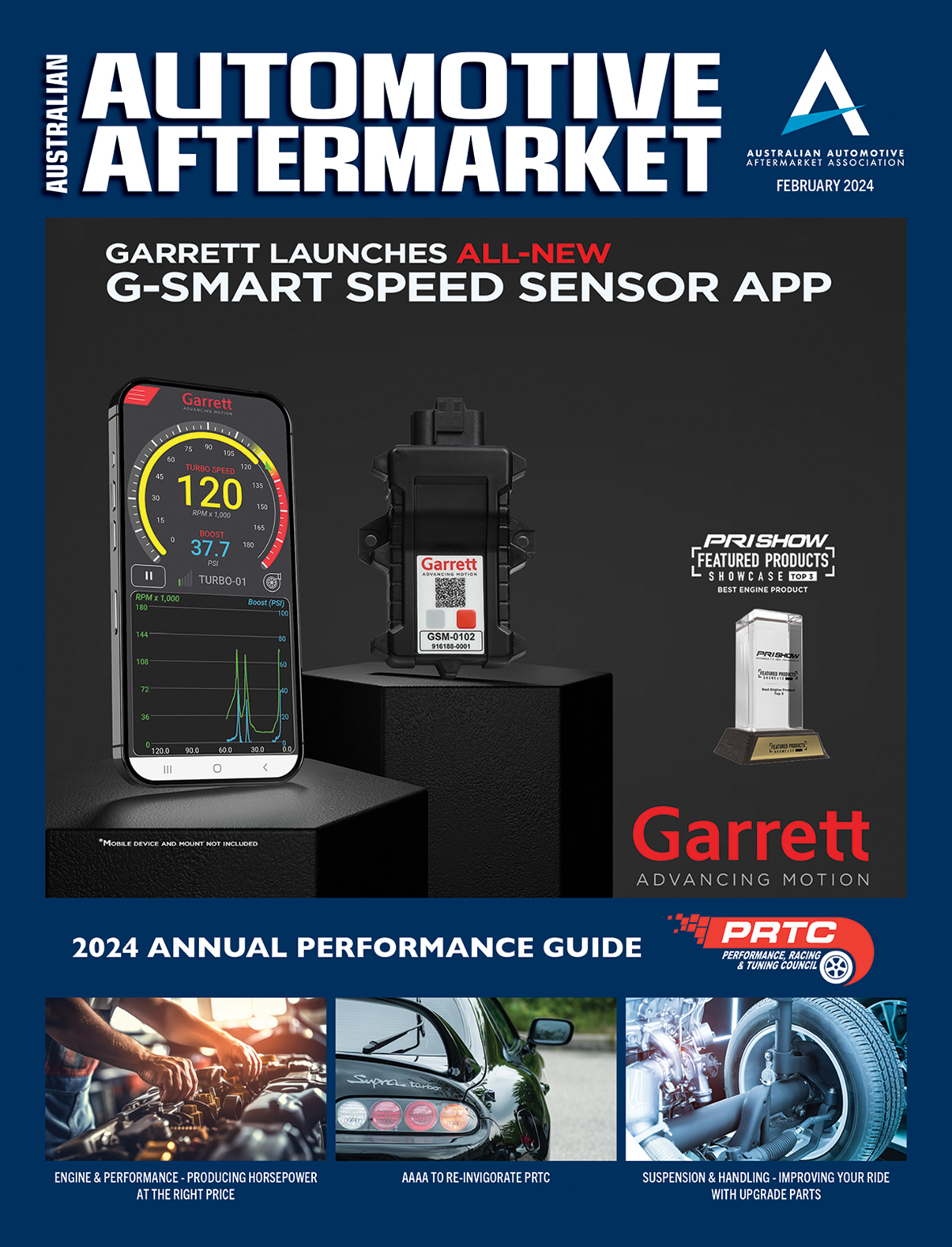DRIVING AWAY FROM MANUAL TRANSMISSIONS
Australian consumers are fickle, and nowhere is this more evident than when it comes to their car choices
This makes life challenging for OEMs and the aftermarket, as they work to stay up to date with latest trends, while also introducing new technological advances and innovations.
One example of this is vehicle transmissions, where it could arguably be said that the ‘traditional’ manual driving experience is on its way to extinction.
A snapshot of the car parc shows that almost one in four vehicles first registered before 2006 are equipped with manual transmissions, the remainder largely automatic, and CVT almost non-existent.
We then see a shift away from manual, as OEMs made the switch to automatic between 2006 and 2012. We’ve since seen a correction in the data, with around one in six recently registered vehicles (i.e., 2013 – 2020) using a CVT transmission.
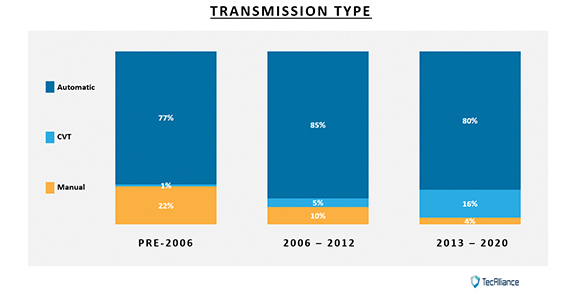
While this is being driven by a combination of consumer demands and technological advances, does it mean that CVT is the future? Looking at it the other way, in another five to 10 years will OEMs still produce vehicles with manual transmissions?
Approaching this question through another lens, there used to be significant differences between 4WD and non-4WD vehicles.
Looking back to pre-2006 data, 4WDs were more likely than non-4WD vehicles to be manual, with automatic transmissions viewed as subpar when undertaking ‘serious’ 4WD activities.
Technological improvements to automatic transmissions over the intervening period then show them increasingly penetrating the 4WD market, with 4WDs registered between 2013-2020 more likely to be automatic than their non-4WD counterparts.
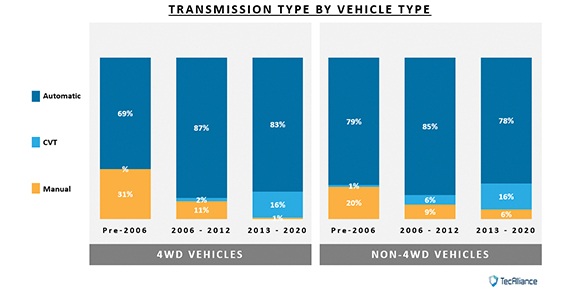
Diving deeper into the details, we’ve considered the impact of these changes on specific vehicle models:
- The Workhorse: while the Toyota Hilux is still the cornerstone of Aussie work trucks, it has transitioned from a primarily manual Ute to being almost fully automatic. This speaks to a larger trend, where Utes have crossed from being work trucks to family vehicles, needing to accommodate different driving behaviour as a result.
- The Hot Hatch: a significant transition is also evident for the Subaru WRX, a poster child for Japanese hot hatches. While the proportion has fallen from its historic highs, around one in three are still manual, with the rest split between automatic and CVT. This suggests that a core consumer segment is still chasing the ‘driving experience,’ whilst others enjoy the WRX styling, but are willing to trade off other elements. To quote one auto enthusiast: “Running through the gears, being involved in the mechanical process, getting that perfect heel and toe downshift just puts a smile on your face!”
- The Runabout: finally, one of the most ubiquitous vehicles on Australian roads. The Toyota Corolla has always skewed to automatic but has made the biggest shift to CVT in more recent iterations as it aims to deliver the greatest efficiency for daily driving use.
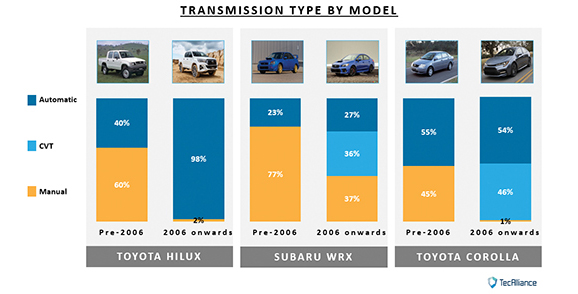
The market is clearly changing, but based on this data it’s impossible to say that manual transmissions are dead.
However, it can be said with certainty that they’re visibly on the path to a more niche space in the market. From a ‘parts and servicing’ perspective, a choice must be made, which is deciding the importance of catering to (specialising in) these vehicles, as opposed to a ‘mass market’ alternative.
Ultimately, this will come back to understanding your current and prospective customers, and the composition of your local car parc, and then making a specific choice about which direction offers the greatest opportunity going forward.
This column was prepared for AAA Magazine by ACA Research, the AAAA’s partners in the AAAA Aftermarket Dashboard which is delivered to AAAA members each quarter.
For more information, visit www.acaresearch.com.au or contact Ben Selwyn on bselwyn@acaresearch.com.au






